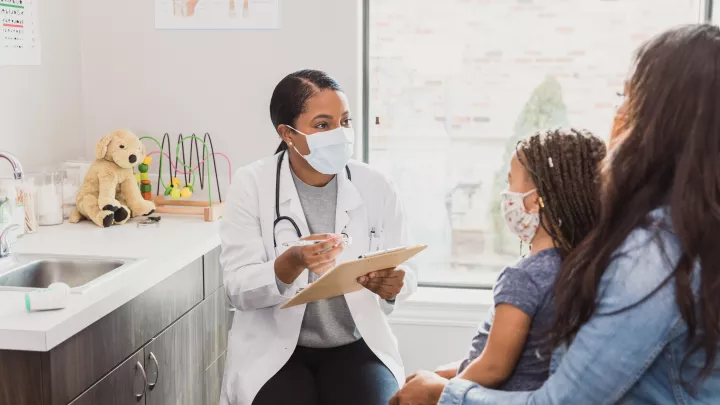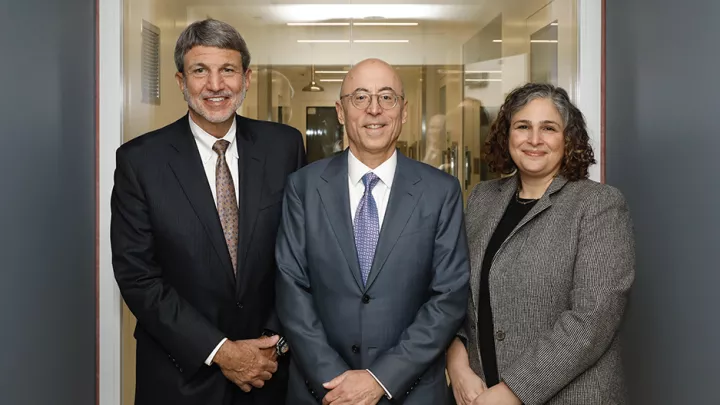
5 Reasons It’s Important for People of Color to Take Part in Clinical Trials
To become part of the standard of care in doctors’ offices and hospitals and to be covered by health insurance, new medications and procedures go through a rigorous testing process. This process, which typically takes several years, is used to determine the safety and efficacy of the new product or process.
Historically, middle- and higher-income White families and individuals of European ancestry have been the vast majority of participants in clinical trials—these carefully conducted “try outs” of new therapies that lead to any major advancement in medical care.
People of color from various marginalized racial and ethnic backgrounds, and people of other socioeconomic status, have been underrepresented in clinical research. In 2020, the Food and Drug Administration reported, 75% of clinical trial participants were White, while only 11% were Hispanic, 8% Black or African American and 6% Asian.
The reasons are complicated. Many people of color have a distrust of medical institutions, inspired by a history of unethical medical experiments and mistreatment. Study recruitment may also present biases. But increasing representation is essential for health equity. Children’s Hospital Los Angeles is committed to increasing representation in clinical trial participation, to ensure that all children, teens and young adults benefit from leading-edge care and new discoveries.
5 reasons why people from communities of color should consider participating in clinical trials:
1. A more diverse participant pool may mean new treatments that work for a more diverse group of people.
People react differently to diseases. Your risk of developing certain conditions can be affected by several factors, including, but not limited to, race, ethnicity, disabilities, biological sex and socioeconomic status. A person’s responses to treatment may also be affected by these differences.
“We know in pediatrics that cancer outcomes—particularly for leukemia—are worse in African Americans, Latina/o/x, children with Spanish-speaking parents and people of lower socioeconomic status,” says Paibel Aguayo-Hiraldo, MD, Medical Director of Transplant and Cellular Therapy, in CHLA’s Cancer and Blood Disease Institute. “One possible explanation may be due to the lower enrollment in clinical research for these groups.”
Clinical studies also recently revealed that 40% to 80% of autism risk is genetic—with 200+ genes identified so far. But developing new treatment strategies relies upon using large databases of genetic information where diversity hasn’t been the rule. Researchers at CHLA are working to change that. When trial participants reflect the real world, all people and communities can benefit from scientific advances.
2. Clinical trials can give participants access to newer, experimental therapies or approaches to care not yet available commercially.
Depending on your medical history, “a clinical trial may be the only way to get you the therapy that gives you the chance of a better outcome,” says Dr. Aguayo-Hiraldo. This is especially true for people whose initial cancer treatments fail or whose cancer returns.
3. More safeguards than ever are in place to protect the safety and privacy of research participants.
Today, Institutional Review Boards like the one at CHLA—made up of medical experts and community members—evaluate the risks and benefits of clinical studies involving human subjects before they can be conducted.
4. Participating in a clinical trial is 100% voluntary.
You don’t have to agree to a clinical trial and if you do, you can withdraw at any time, for any reason. “Ask a lot of questions before you sign a consent to participate,” says Dr. Aguayo-Hiraldo. “Any question is welcome.”
5. Access to clinical trials—and efforts to reduce barriers to broader participation—are improving.
At CHLA, investigators are actively recruiting children and families from historically underserved populations. The hospital’s Language and Culture Services team provides translation services in at least 34 languages. All necessary forms for clinical trials are available in English, and a large proportion of them are currently available in Spanish and other languages that are most requested in Southern California. And though printed documents may not be available in a family's native language, all research consents are performed with either an in-person or remote interpreter.
For some families, the costs of participation like transportation, lodging near the trial site and childcare can be prohibitive. More research studies are including funding to offset such expenses, and study teams work with participating families to find other options to make participation easier as well.


